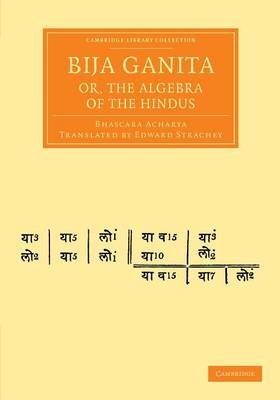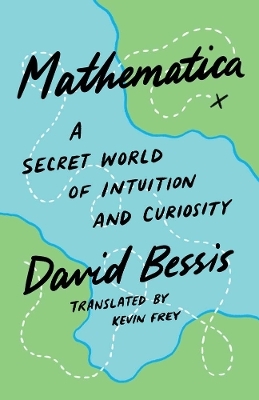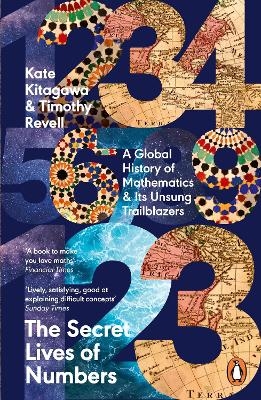
Bija Ganita; or, the Algebra of the Hindus
Seiten
2013
Cambridge University Press (Verlag)
978-1-108-05601-4 (ISBN)
Cambridge University Press (Verlag)
978-1-108-05601-4 (ISBN)
Twelfth-century mathematician and astronomer Bhascara Acharya (1114–85) is considered to be medieval India's greatest mathematician. Forming part of his Sanskrit magnum opus Siddhānta Shiromani, this is his treatise on algebra. It was translated into English by Edward Strachey (1774–1832) and first published in 1813.
An important mathematician and astronomer in medieval India, Bhascara Acharya (1114–85) wrote treatises on arithmetic, algebra, geometry and astronomy. He is also believed to have been head of the astronomical observatory at Ujjain, which was the leading centre of mathematical sciences in India. Forming part of his Sanskrit magnum opus Siddhānta Shiromani, the present work is his treatise on algebra. It was first published in English in 1813 after being translated from a Persian text by the East India Company civil servant Edward Strachey (1774–1832). The topics covered include operations involving positive and negative numbers, surds and zero, as well as algebraic, simultaneous and indeterminate equations. Strachey also appends useful notes made by the orientalist Samuel Davis (1760–1819). Of enduring interest in the history of mathematics, this was notably the first work to acknowledge that a positive number has two square roots.
An important mathematician and astronomer in medieval India, Bhascara Acharya (1114–85) wrote treatises on arithmetic, algebra, geometry and astronomy. He is also believed to have been head of the astronomical observatory at Ujjain, which was the leading centre of mathematical sciences in India. Forming part of his Sanskrit magnum opus Siddhānta Shiromani, the present work is his treatise on algebra. It was first published in English in 1813 after being translated from a Persian text by the East India Company civil servant Edward Strachey (1774–1832). The topics covered include operations involving positive and negative numbers, surds and zero, as well as algebraic, simultaneous and indeterminate equations. Strachey also appends useful notes made by the orientalist Samuel Davis (1760–1819). Of enduring interest in the history of mathematics, this was notably the first work to acknowledge that a positive number has two square roots.
Preface; Introduction; 1. On affirmative and negative; 2. On the cipher; 3. On unknown quantities; 4. On surds; 5. On indeterminate problems of the first degree; 6. On indeterminate problems of the second degree; Book 1. On simple equations; Book 2. On quadratic equations; Book 3. On equations involving indeterminate questions of the first degree; Book 4. On equations involving indeterminate questions of the second degree; Book 5. On equations involving rectangles; Mr Davis's notes.
| Erscheint lt. Verlag | 28.2.2013 |
|---|---|
| Reihe/Serie | Cambridge Library Collection - Perspectives from the Royal Asiatic Society |
| Übersetzer | Edward Strachey |
| Zusatzinfo | Worked examples or Exercises |
| Verlagsort | Cambridge |
| Sprache | englisch |
| Maße | 178 x 254 mm |
| Gewicht | 240 g |
| Themenwelt | Mathematik / Informatik ► Mathematik ► Geschichte der Mathematik |
| ISBN-10 | 1-108-05601-6 / 1108056016 |
| ISBN-13 | 978-1-108-05601-4 / 9781108056014 |
| Zustand | Neuware |
| Haben Sie eine Frage zum Produkt? |
Mehr entdecken
aus dem Bereich
aus dem Bereich
a secret world of intuition and curiosity
Buch | Hardcover (2024)
Yale University Press (Verlag)
CHF 45,80
a global history of Mathematics & its Unsung Trailblazers
Buch | Softcover (2024)
Penguin Books Ltd (Verlag)
CHF 22,65
Das Jahrhundert, in dem die Mathematik sich neu erfand. 1870-1970
Buch | Hardcover (2022)
Heyne (Verlag)
CHF 30,80


